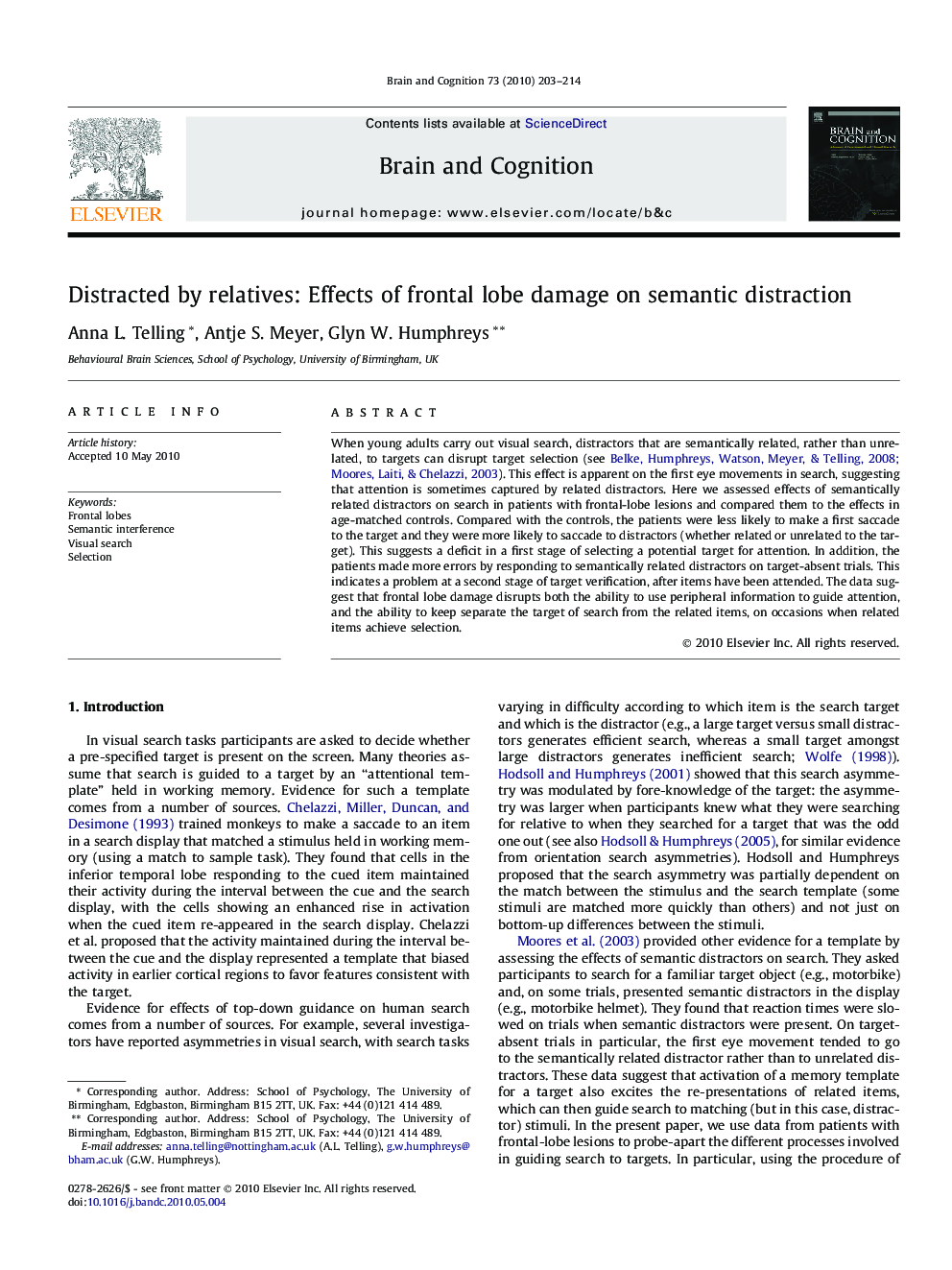| Article ID | Journal | Published Year | Pages | File Type |
|---|---|---|---|---|
| 924335 | Brain and Cognition | 2010 | 12 Pages |
When young adults carry out visual search, distractors that are semantically related, rather than unrelated, to targets can disrupt target selection (see Belke et al., 2008 and Moores et al., 2003). This effect is apparent on the first eye movements in search, suggesting that attention is sometimes captured by related distractors. Here we assessed effects of semantically related distractors on search in patients with frontal-lobe lesions and compared them to the effects in age-matched controls. Compared with the controls, the patients were less likely to make a first saccade to the target and they were more likely to saccade to distractors (whether related or unrelated to the target). This suggests a deficit in a first stage of selecting a potential target for attention. In addition, the patients made more errors by responding to semantically related distractors on target-absent trials. This indicates a problem at a second stage of target verification, after items have been attended. The data suggest that frontal lobe damage disrupts both the ability to use peripheral information to guide attention, and the ability to keep separate the target of search from the related items, on occasions when related items achieve selection.
